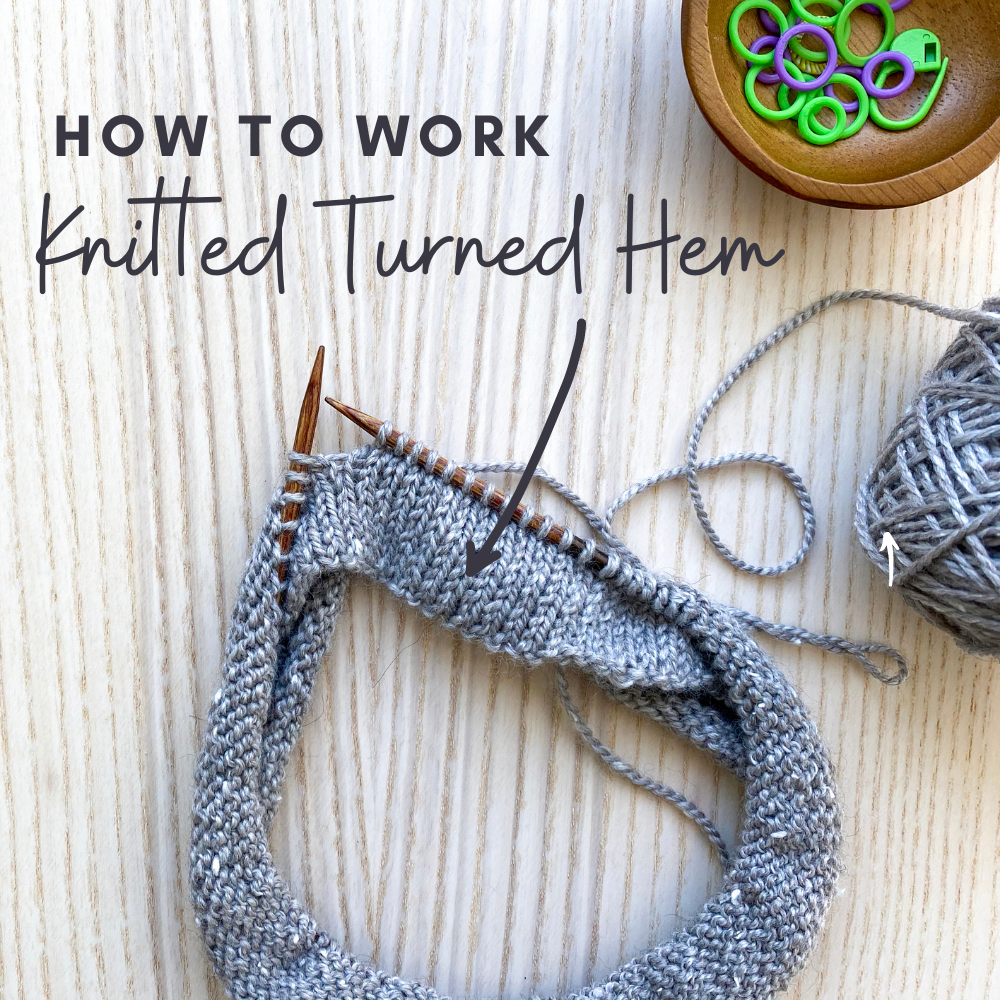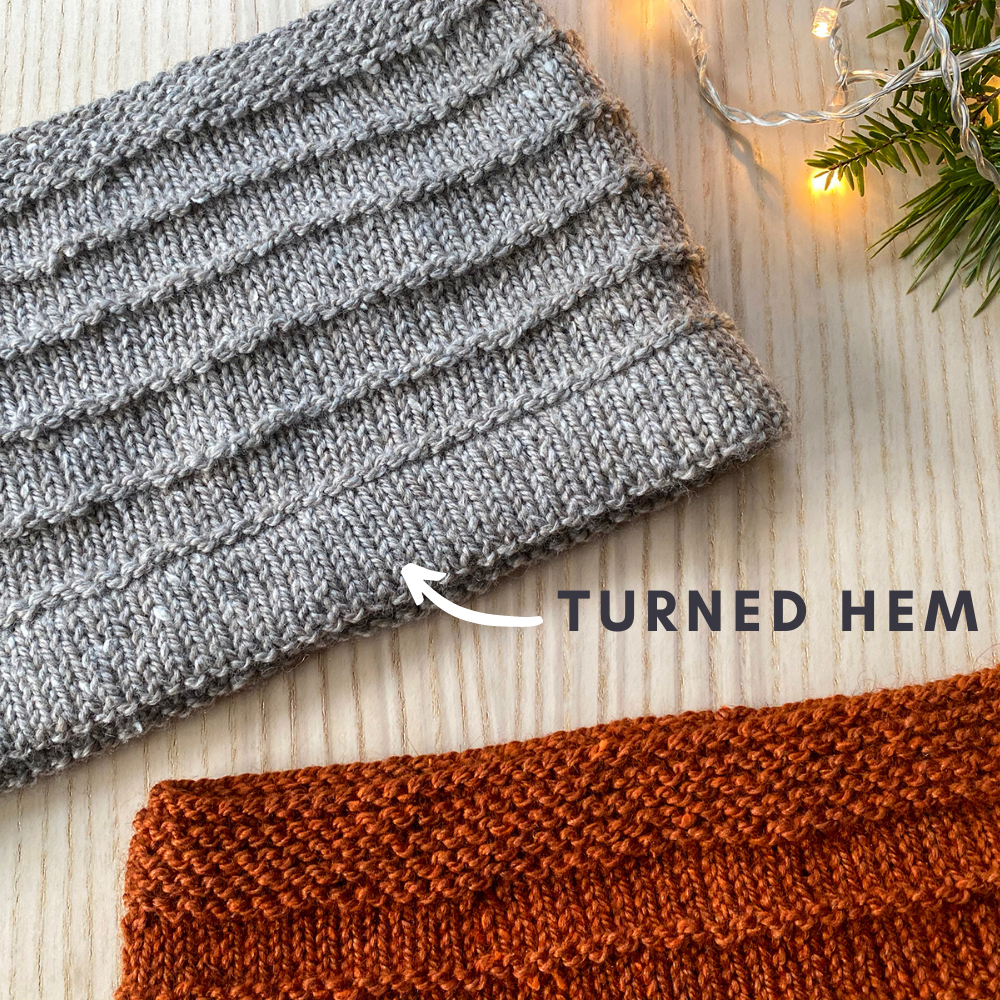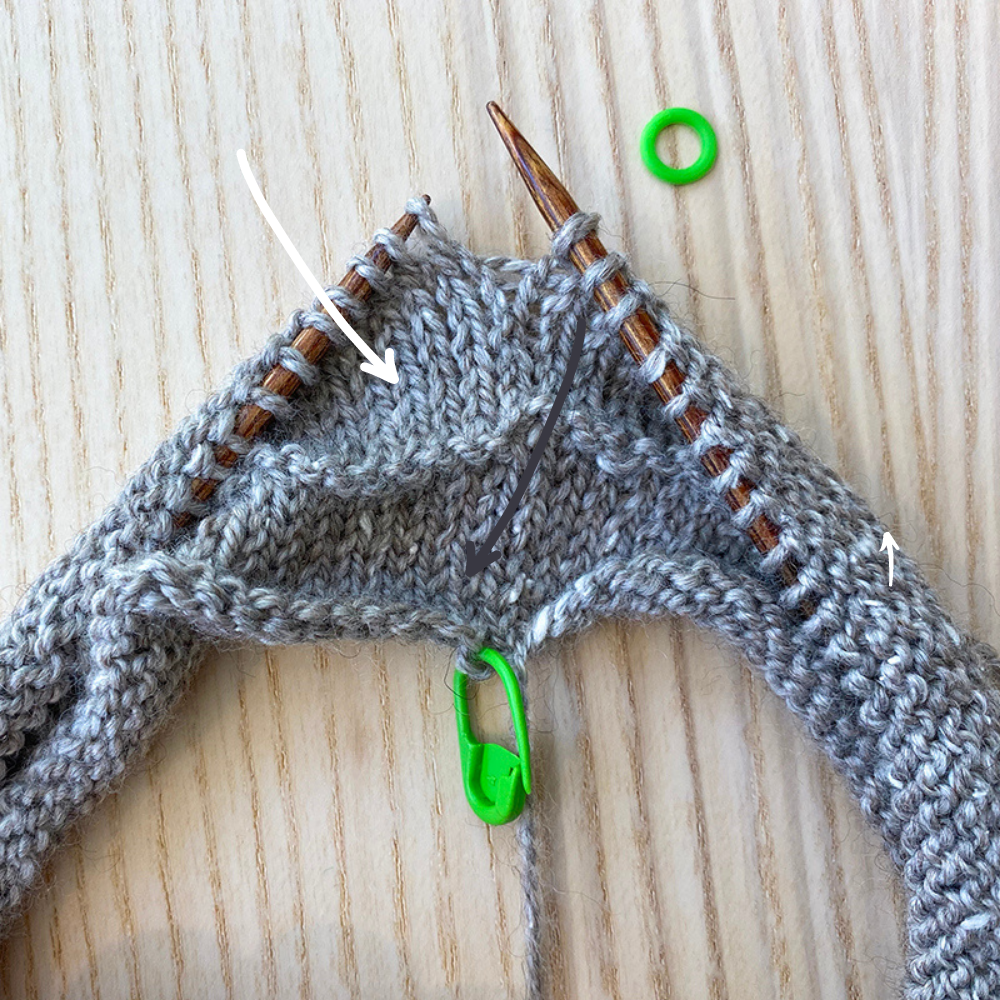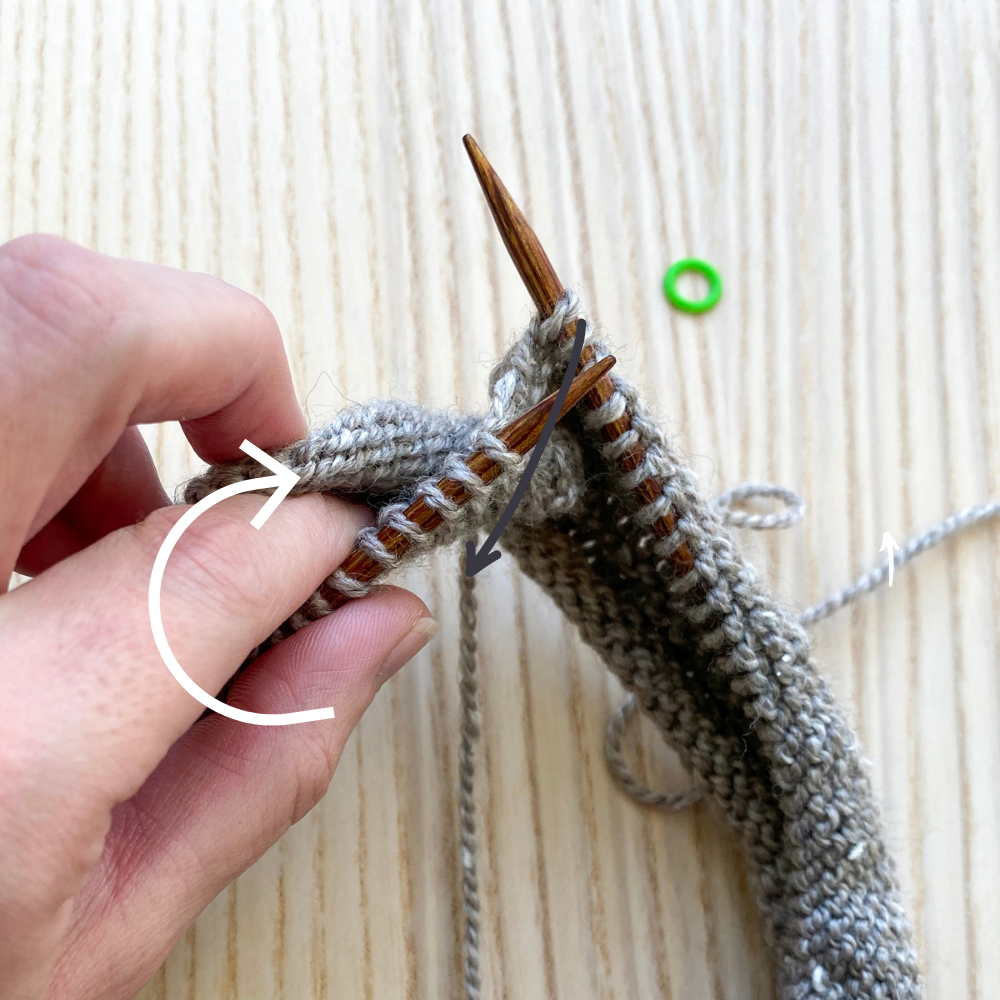How to work the knitted turned hem

What is a knitted turned hem?
The knitted turned hem creates such a nice, clean edge and it allows you to have a flat, non-rolling stockinette stitch hem! How does it do this? You create a double layer of stockinette stitch and half of it is folded under on the inside of your fabric. Here it is pictured in my Acadia Loop neckwarmer:

You’ll see it on the bottom of cowls or sweaters and they are multiple ways you can create them. Often they are hand-seamed down, but when you are working in the round and the bottom of the hem is your cast-on edge (so in a bottom-up sweater or bottom-up cowl), you can skip the hand-seaming and create the turned-hem as you knit. This is what I did in my Acadia Loop Neckwarmer (tutorial below) as well as my Winslow Park Cowl.
Tips before you get started…
When working this particular technique, here are some general tips I have:
- Cast-on LOOSELY. Because you’ll later be picking up and knitting into the cast-on edge stitches, looser will be easier. Even if you have to cast-on with a larger needle size.
- Especially for the first time you try this technique, use a light color yarn – this will help you see those cast-on stitches better.
How it’s worked in these cowls
Let me show you how you do it when working in the round from the bottom-up, just like in this neckwarmer.
- You start by casting-on – I use the long-tail cast-on method and the most important thing to remember is to try to cast-on as loosely as possible!
- Then you work in plain stockinette stitch in the round for about 1″.
- Then you work a purl round (to create a ridge), followed by another 1″ of stockinette stitch.
- Then comes the turning part…

Flip the hem up so that your purl ridge is now the bottom edge and the cast-on stitches are lined up next to (and to the left) of your “live” stitches on the left needle.

The next step will be to knit into your “live” stitch AND the corresponding cast-on stitch and knit them together. Sounds a little tricky but once you do the first couple it’s so easy! My video tutorial below shows you exactly how to do it:
And for some additional photo tutorials, check out this page where I walk you through the process with my Winslow Park Cowl. Happy knitting!
